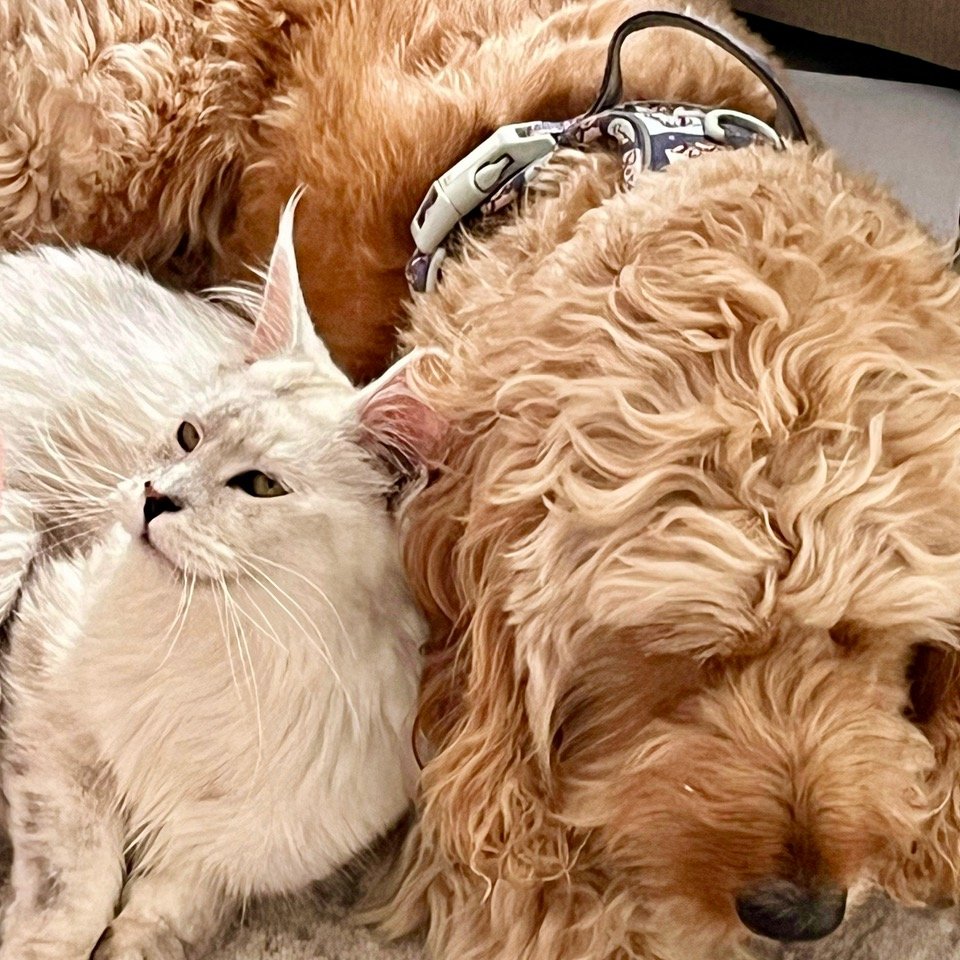Adding Another Cat to Your Household: Tips for a Peaceful Multi-Cat Home
Are you thinking about adding another cat to your household? It's an exciting idea, but it can also bring challenges as you work to create a peaceful multi-cat home. Whether you’re adopting a playful kitten or a calm adult cat, thoughtful planning and patience are key to helping your feline friends and pets to coexist happily. Here are some essential tips to guide you through the process.
All of the images on this page are from our owners, showing their Belle Ayr cats in their forever homes!
Focus on Age and Temperament Over Gender
When considering another cat, don't stress too much about the gender of the cats involved. The age and temperament of both the new and existing cats are far more critical. A younger cat or kitten is usually the best choice, especially if your current cat is under three years old. Young cats tend to be more adaptable, and their playful energy can help them bond with an existing cat.
Timing Matters: Before Your Cat Turns 3
If you're thinking about adding another cat, it's generally easier to do so before your current cat turns three years old. Younger cats are more likely to accept a new companion, as they are still establishing their social structure. Cats older than three may be more set in their ways, making it harder for them to accept a new addition to their territory.
Why a Younger Cat or Kitten?
Adult cats are often territorial and may view another adult feline as an intruder. A kitten, on the other hand, poses less of a threat and is more likely to be accepted by your current cat. Kittens are seen as non-threatening because of their small size and lack of established territory. As they grow, their personalities will develop, and by around eight weeks, you can get a better sense of their temperament.
Considering an Adult Cat? Personality Match is Key
If you prefer to re-home an adult cat, success will largely depend on the personality of your current cat. If your resident cat is easygoing, a laid-back new cat could be a good match. The key is to introduce them slowly and correctly, giving both cats time to adjust to each other. A gradual introduction helps minimise territorial disputes and reduces stress.
For more detailed guidance on re-homing an adult cat, check out our post on Rehoming Retired Cats.
Proper Introductions are Crucial
The way you introduce your new cat or kitten to your current household pets can make or break their relationship. Start by keeping them in separate spaces, allowing them to get used to each other's scent before meeting face-to-face. Gradual introductions, with positive reinforcement, can help both cats feel safe and secure.
For step-by-step instructions on introducing your new cat to the family, visit our post on Introducing Your New Pet to Family and Other Pets.
The Only One
Some older settled cats like to be on their own, they are happy with you, settled in their ways and really don’t want a companion, friend of any other pet taking residence in their home.
Knowing your pet can help, but sometimes it’s just by trial and then realising that you’ve upset the balance. In which case having a great relationship with the person you bought the second cat is useful, as it does happen. The only option is to restore the balance and accept your cat will be happier on their own, living out a life of luxury spoiled by your attentions.
Feedback from a Parent
by Sam mum to Aramis & Ophelia:
1. Follow the pace of the slowest cat - even though ours was fast we followed aramis’ pace not Ophelia’s as she was ready to accept him faster, he had some bigger feelings
2. Don’t ignore the new cat but make sure the original cat knows you still love them- whilst Ophelia was in my room I slept on the sofa during intros and made sure I went to aramis first to avoid jealousy
3. Add extra resources - despite Aramis having more things than most kids we added in an extra scratcher and a few new toys the same time as Ophelia so they didn’t feel like they were fighting for resources. Also added extra water bowl and litter tray. And a whole cat wall with an extra shelf (the shelf was an early issue as they both wanted to use it).
4. It’s ok to take a step back, these two had a little moment the first day we started free roaming so we had some time out from it (and they then sat by the door waiting for each other).
5. Embrace and accept the fact they will be different personalities and need different things from you. This is actually the best bit as you get a special unique bond with both.
6. Remember to split playtime with things they both like or take it in turns playing favourite games.
7. Just accept you have no authority anymore, it’s their home.
Conclusion
Bringing another cat into your home can be a rewarding experience for both you and your feline companions. By carefully considering the age, temperament, and personalities of all pets, especially cats, and by following a thoughtful introduction process, you can set the stage for a harmonious multi-cat/pet household. With patience and attention to detail, your pets will form a lasting bond that enriches your home life.












